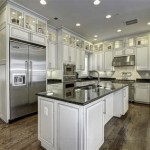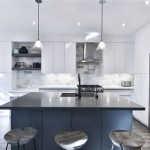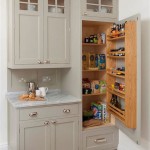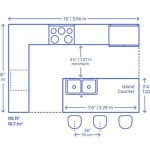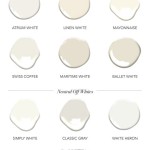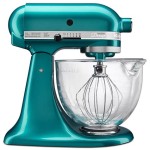Kitchen Design Pictures For Small Kitchens: Maximizing Space and Style
Designing a small kitchen presents unique challenges, requiring careful consideration of space utilization, functionality, and aesthetics. Visual inspiration plays a crucial role in the design process. Kitchen design pictures offer a wealth of ideas, allowing homeowners to explore different layouts, color schemes, material choices, and storage solutions that can be adapted to their specific needs and spatial constraints. This article explores key aspects of kitchen design for small spaces, drawing on insights gleaned from analyzing various kitchen design pictures. The focus will be on practical strategies for creating a functional, stylish, and efficient kitchen, even within limited square footage.
Optimizing Layout and Workflow
The layout of a small kitchen is paramount. Poorly planned layouts can lead to congestion, inefficient workflows, and underutilized space. Kitchen design pictures frequently highlight several layout options suitable for small kitchens, including the galley, L-shaped, U-shaped, and one-wall layouts. Each of these layouts has its own advantages and disadvantages, and the best choice will depend on the shape and size of the available space.
A galley kitchen, characterized by two parallel runs of cabinets and countertops, is a popular choice for narrow spaces. Galley kitchens are highly efficient, placing all essential elements within easy reach. Kitchen design pictures showcasing galley kitchens often emphasize the importance of leaving adequate aisle space between the two runs. Ideally, this space should be at least 42 inches wide to allow for comfortable movement.
L-shaped kitchens, formed by two perpendicular runs of cabinets, are well-suited for corner spaces. This layout allows for a compact work triangle, connecting the sink, refrigerator, and cooktop. Kitchen design pictures of L-shaped kitchens often feature corner cabinets with pull-out storage solutions to maximize accessibility and prevent wasted space. The open area created by the "L" can be used for a small dining table or additional storage.
U-shaped kitchens offer the most countertop and storage space in a small area. This layout typically wraps around three walls, creating a highly functional work zone. Kitchen design pictures featuring U-shaped kitchens often showcase how to divide the space into distinct work areas, such as a cooking zone, a cleaning zone, and a food preparation zone. The central area of the "U" should be kept clear to allow for easy movement.
One-wall kitchens are ideal for very small apartments or studios where space is extremely limited. In this layout, all appliances and cabinets are arranged along a single wall. Kitchen design pictures of one-wall kitchens often demonstrate the use of vertical storage solutions, such as tall cabinets and open shelving, to maximize storage capacity without taking up valuable floor space. Combining this setup with a kitchen island on wheels is another way to maximize work area within limited area.
Maximizing Storage Solutions
Storage is a critical consideration in small kitchens. Every inch of space must be utilized effectively to prevent clutter and maintain functionality. Kitchen design pictures frequently showcase innovative storage solutions that can be incorporated into small kitchen designs.
Vertical storage is paramount. Tall cabinets extending to the ceiling maximize storage capacity and draw the eye upward, creating a sense of height. Kitchen design pictures often feature tall pantry cabinets with adjustable shelves, pull-out drawers, and door-mounted racks to accommodate a variety of items. Open shelving above the countertop can provide additional storage for frequently used items, such as dishes, glasses, and cookbooks.
Base cabinets can be equipped with a variety of pull-out storage solutions, such as pull-out shelves, pull-out waste containers, and pull-out spice racks. These solutions make it easier to access items stored at the back of the cabinet and prevent wasted space. Kitchen design pictures also highlight the use of corner cabinet organizers, such as lazy Susans and pull-out corner shelves, to maximize accessibility and prevent wasted space in corner cabinets.
Drawer organizers are essential for keeping drawers tidy and maximizing storage capacity. Divided drawers for utensils, cutlery, and spices keep items organized and prevent them from shifting around. Kitchen design pictures often feature custom drawer inserts designed to fit specific items, such as pots and pans, lids, and cutting boards.
Consider utilizing the space above the refrigerator. A cabinet above the refrigerator can provide valuable storage for less frequently used items, such as serving dishes, holiday decorations, and extra paper towels. Kitchen design pictures often showcase how to integrate this cabinet seamlessly into the overall kitchen design.
Finally, consider the use of pot racks or utensil rails. Hanging pots, pans, and utensils from a rack or rail above the cooktop not only frees up cabinet space but also adds a touch of visual interest to the kitchen.
Selecting Color Schemes and Materials
The color scheme and materials used in a small kitchen can significantly impact its perceived size and ambiance. Light, neutral colors tend to make a space feel larger and more open, while dark colors can make a space feel smaller and more enclosed. Kitchen design pictures frequently showcase the use of light colors, such as white, cream, and light gray, to create a bright and airy atmosphere in small kitchens.
White cabinets are a classic choice for small kitchens. They reflect light, making the space feel brighter and more spacious. Kitchen design pictures often feature white shaker cabinets, which have a timeless and versatile aesthetic that complements a wide range of design styles. Consider incorporating contrasting hardware, such as brushed nickel or black pulls, to add visual interest.
Light-colored countertops, such as white quartz or light granite, can also contribute to a brighter and more open feel. Choose a countertop material that is durable, easy to clean, and resistant to stains and scratches. Kitchen design pictures often showcase the use of countertops with minimal patterns to avoid overwhelming the space.
A backsplash can be a great way to add personality and visual interest to a small kitchen. Consider using a light-colored tile backsplash, such as subway tile or glass tile, to reflect light and create a sense of depth. Kitchen design pictures often feature backsplashes that extend all the way to the ceiling to create a dramatic effect and visually enlarge the space.
Mirrors can be used to create the illusion of more space. A mirrored backsplash or a strategically placed mirror can reflect light and make the kitchen feel larger. Kitchen design pictures often showcase the use of mirrors in small kitchens to enhance the sense of spaciousness.
In terms of materials, consider using sleek and modern materials, such as stainless steel appliances and glass accents, to create a clean and contemporary look. Kitchen design pictures often feature stainless steel appliances in small kitchens, as they are durable, easy to clean, and visually appealing.
Lighting and Ambiance
Proper lighting is essential in a small kitchen. Adequate lighting not only enhances functionality but also creates a welcoming and inviting atmosphere. Kitchen design pictures frequently highlight the use of multiple layers of lighting in small kitchens, including ambient lighting, task lighting, and accent lighting.
Ambient lighting provides overall illumination for the kitchen. Recessed lighting is a popular choice for ambient lighting in small kitchens because it is unobtrusive and provides even light distribution. Kitchen design pictures often feature recessed lighting in the ceiling to create a bright and well-lit space.
Task lighting provides focused illumination for specific work areas, such as the countertop, sink, and cooktop. Under-cabinet lighting is an effective way to provide task lighting for the countertop. Kitchen design pictures often showcase the use of LED under-cabinet lights, as they are energy-efficient and provide bright, even light. Pendant lights can be used to provide task lighting for the sink or cooktop. Choose pendant lights that are appropriately sized for the space and hang them at a height that provides adequate illumination without obstructing the view.
Accent lighting highlights specific features of the kitchen, such as artwork, architectural details, or open shelving. Accent lighting can be used to create visual interest and add personality to the space. Kitchen design pictures often feature accent lighting in the form of spotlights, sconces, or LED strip lights.
Natural light is also essential in a small kitchen. Maximize natural light by keeping window coverings to a minimum and choosing light-colored window treatments. If possible, consider adding a window or skylight to bring more natural light into the space. Kitchen design pictures often showcase kitchens with large windows or skylights to create a bright and airy atmosphere.
Finally, consider the use of dimmers to control the intensity of the lighting. Dimmers allow you to adjust the lighting to suit different tasks and create different moods. Kitchen design pictures often feature dimmers on both ambient and task lighting to provide maximum flexibility.

20 Small Kitchens That Prove Size Doesn T Matter Apartment Kitchen Layouts Modern

28 Best Small Kitchen Ideas 2024 Decorating Tips

House Home 20 Small Kitchens That Prove Size Doesn T Matter

Big Ideas For A Small Kitchen Tierney Kitchens

Small Kitchen Ideas To Make The Most Of Your Space

5 Stylish Ideas For Small Kitchens Or Mini Designcafe

5 Small Kitchen Ideas For Your Home Cash Carry Kitchens

Small Kitchen Renovation And Design Ideas Hgtv

Beautiful Kitchen Designs For Small Kitchens Maximise Space

Remodeling Tips For Small Kitchens O Hanlon
See Also


